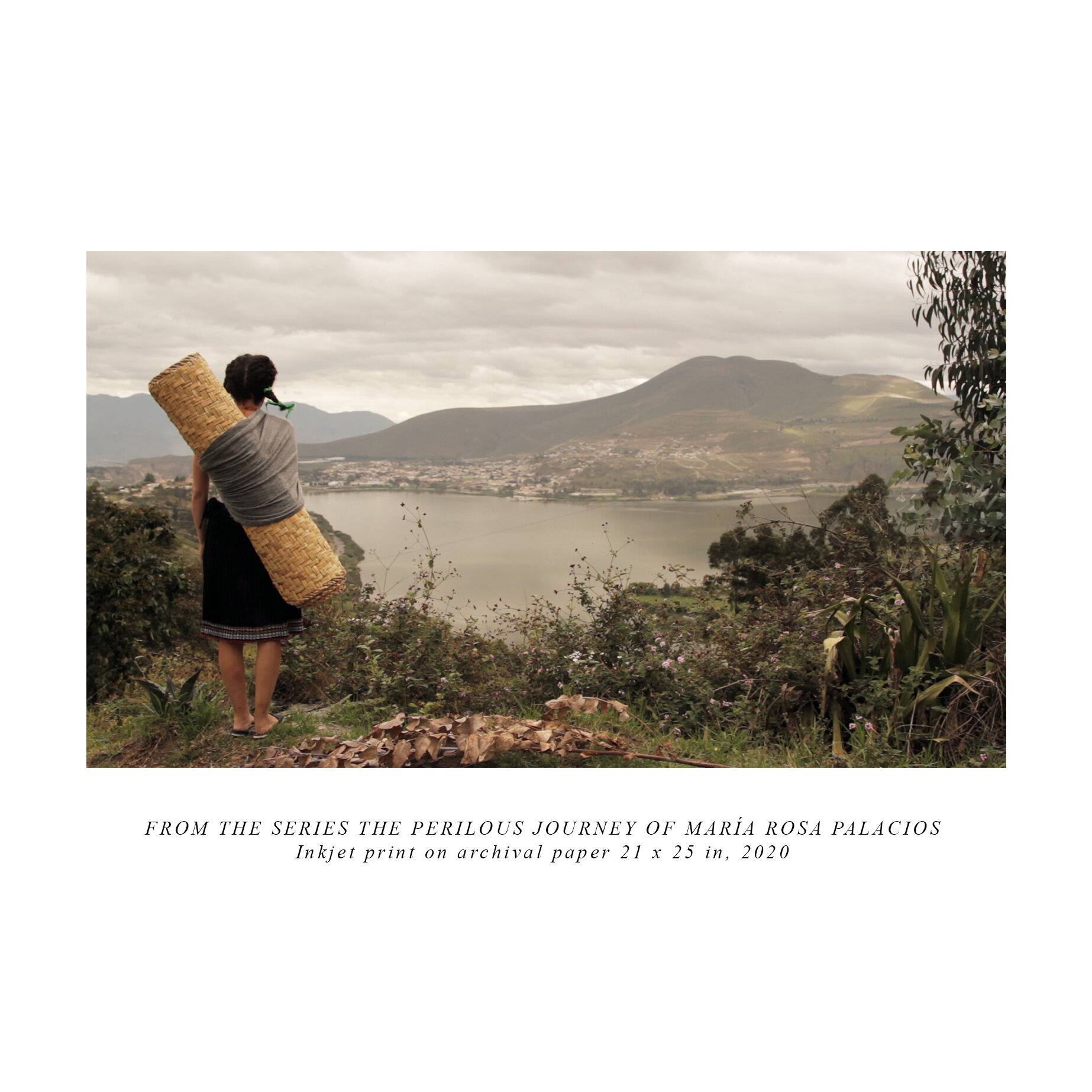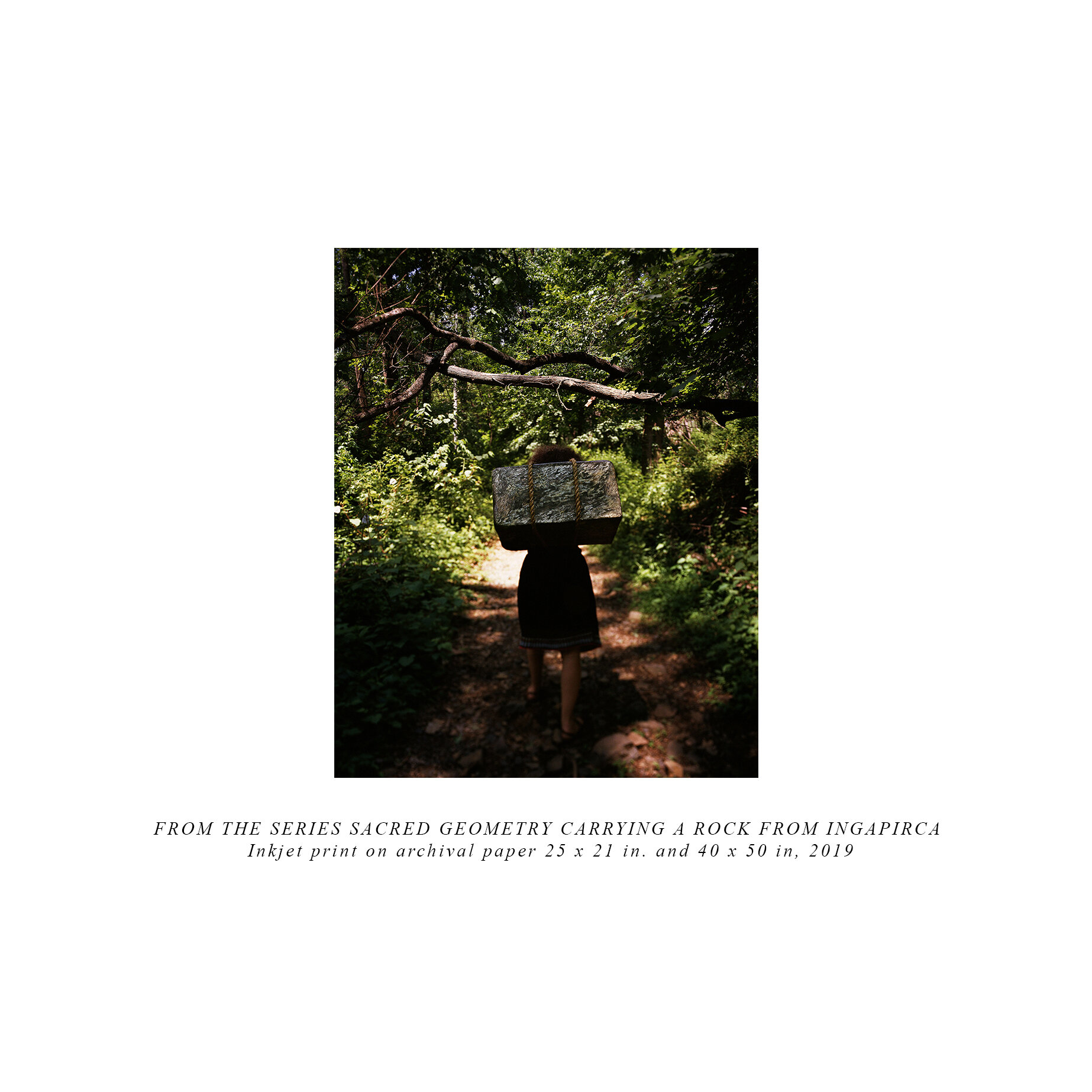Issue # 25 Karina Aguilera Skvirsky
Text by: Susanna V. Temkin








In Karina Aguilera Skvirsky’s most recent work, the New York based multidisciplinary artist introduces three-dimensionality to her ongoing Sacred Geometry series. Based on the Incan site of Ingapirca, the composite images depict the artist’s body juxtaposed with volcanic stones from the Amerindian archaeological site. Projecting beyond the photographic plane, these ancient boulders engulf Skvirsky, leaving only her hair, extended limbs, or in one case, just her fingertips visible. Yet, whereas her previous, two-dimensional photocollages created seamless, albeit uncanny hybrid forms, the addition of depth – the most existential dimension, according to philosopher Maurice Merleau-Ponty – introduces new ambiguities between rock and body. This tenuous contingency metaphorically visualizes the unique subjectivity that informs the core of Skvirsky’s practice, rooted as it is in the space between fact, fiction, memory, and the experience of her own personal narrative.
As the child of an American father of Eastern European Jewish origins and an Ecuadorian mother of Afro-Indigenous descent, Skvirsky draws on her cross-cultural and intersectional heritage in much of her work. In particular, her great-grandmother’s epic journey from the Ecuadorian highlands to the city of Guayaquil has been a critical departure point, marking not only a history that led to the artist’s eventual existence, but also serving as a “gateway,” to use the artist’s own words, to explore the seemingly impossible, the forgotten, and the inherited embedded in one’s personal experience. Through research into her family’s past, Skvirsky discovered that her great-grandmother’s migration took place prior to the completion of the railroad, such that her journey of nearly 600 km was done largely on foot, burro, and canoe – and all at the age of fourteen. Nearly a century later, Skvirsky retraced this path, by inserting her own self in the place of her maternal progenitor. The resulting film, “The Perilous Journey of Maria Rosa Palacios” is a (re)creation of an overlooked history, about an Afro-Indigenous woman who left home to find work as a domestic. It is also a work of mesmerizing simulacra, as the artist, who wears traditional clothing and encounters long-lost relatives along the way, seems to shift between past and present, Maria Rosa and Karina, history and parafiction.
It is these same fissures or slippages that are present in Skvirsky’s latest sculptural photographs, which probe farther into the past to explore the artist’s connection to her Amerindian culture. Indeed, although the works reveal an association between body and rock, the nature of this relationship remains open – are these images of union or erasure? Protection or violence? The addition of three dimensionality vis a vis the protruding stones further contributes to such perceptual shifts, as the eye moves between the various registers of figure, object, and ground. At the same time, this sense of depth reveals itself to be an illusion, as the “stones” are in fact two-dimensional photographs that lean at angles, to trompe l’oeil effect. Skvirsky’s process of photographing, cutting, folding, and shaping her “stones” echoes her Incan forebear’s hand-chiseling technique, translated across time and media, yet perhaps united by their Sacred Geometry.
Susanna V. Temkin.
Karina Aguilera Skvirsky is a multidisciplinary artist that works mainly with photographs, video, and performance. She is currently Associate Professor in the Department of Art at Lafayette College, Easton PA. She frequently has solo and group exhibitions in the United States and Latin America in both galleries and museums. She has participated in various biennials including the Cuenca Biennial, which was curated by Dan Cameron in 2016 and the São Paulo Biennial in 2010. She has participated in numerous residencies and received multiple grants. Currently, she is in the production phase of a new project, “How to buld a wall and other ruin” that is being funded by a 2019 Creative Capital (NY, NY) grant. Her work can be seen in fairs such as ARCO Madrid, NADA Miami or PARC Lima, where she regularly exhibits with the galleries that represent her. Her work is included in the following collections: Urbes Muatantes, The Whitney Museum of American Art, the SFMOMA, the Art Institute of Chicago, as well as numerous private collections.
Susanna Temkin is Curator at El Museo del Barrio, New York. She earned her master’s and PhD degrees from the Institute of Fine Arts, New York University, where her research focused on modern art in the Americas, with a focus on Cuba. Prior to El Museo, she served as Assistant Curator at Americas Society in New York, as well as the research and archive specialist at the Cecilia de Torres, Ltd., where she assisted in co-authoring the digital catalogue raisonné of artist Joaquín Torres-García. Temkin has published essays and reviews in the Rutgers Art Review, Burlington Magazine, and Hemispheres, and authored the chronology of Concrete Cuba: Cuba Geometric Abstraction from the 1950s, produced by David Zwirner Books.

